"We especially need imagination in science. It is not all mathematics, nor all logic, but it is somewhat beauty and poetry." -Maria Montessori
The Universe has some wonderful sights to show you if you know how to look for them, and that's maybe most apparent when you look at some of the amazing images from the Hubble Space Telescope. Here on Earth, however, the onset of winter for many of us brings a little bit of scarcity with it, something Drive By Truckers can help you relate to with their song,
You might not think these two things are related -- the wonders of deep space and the chilling winters of Earth -- but one artist saw things a little differently.
This, for example, is the Crab Nebula -- Messier 1 -- as seen by Hubble. An image like this has been stitched together from many images (due to its relatively large angular size) and many different wavelengths (which brings out the color/contrast), and is known as a mosaic.
Well, artist Jimmy McBride has taken inspiration from this (and other) images, and has stitched together unique, one-of-a-kind quilts of these spectacular deep-space wonders!
 Image credit: Jimmy McBride, of http://jimmymcbride.com/.
Image credit: Jimmy McBride, of http://jimmymcbride.com/.
These deep space images seem to inspire a variety of stories in Jimmy's mind, which leads him to choose fabric, patterns and details to highlight in his quilts, which are both fair representations of the originals and also provide a personalized twist on them!
Hubble isn't the only source of inspiration for these delightful works; there are also spectacular quilts of objects from within our own Solar System, like one of Saturn's largest moons, Iapetus.
Some of my other favorites that he's taken on include the Butterfly Nebula, NGC 6302, of a deceased sun-like star,
the super star cluster R136 in the Tarantula Nebula, the largest star-forming region (and largest known open star cluster) in our local group,
 Image credit: NASA, ESA, and F. Paresce (INAF-IASF, Bologna, Italy), R. O'Connell (University of Virginia, Charlottesville), and the Wide Field Camera 3 Science Oversight Committee (main); Jimmy McBride (inset).
Image credit: NASA, ESA, and F. Paresce (INAF-IASF, Bologna, Italy), R. O'Connell (University of Virginia, Charlottesville), and the Wide Field Camera 3 Science Oversight Committee (main); Jimmy McBride (inset).
and the incredible Pillars of Creation in the Eagle Nebula, perhaps the most famous Hubble photo of them all.
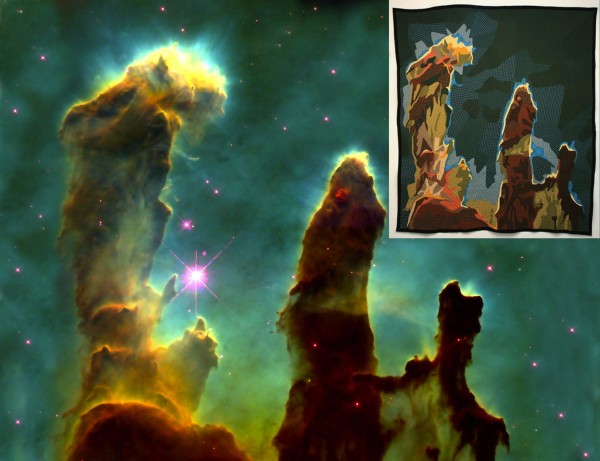 Image credit: NASA, Jeff Hester, and Paul Scowen (Arizona State University) (main); Jimmy McBride (inset).
Image credit: NASA, Jeff Hester, and Paul Scowen (Arizona State University) (main); Jimmy McBride (inset).
These quilts range from child-size, or about 4 ft. x 4 ft. (1.2 m x 1.2 m), all the way up to 6.75 feet (2.05 m) on a side! But that's not the best part. The best part is that these quilts, which normally sell for thousands of dollars and are no longer being made, are available on Jimmy's Etsy site (Stellarquilts) for just hundreds of dollars apiece!
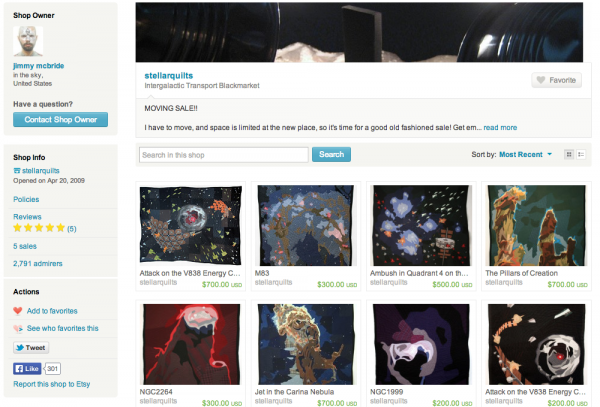 Image credit: Stellarquilts at Etsy, via http://www.etsy.com/shop/stellarquilts#.
Image credit: Stellarquilts at Etsy, via http://www.etsy.com/shop/stellarquilts#.
This wonderful fusion of science-and-art has been featured before at Science Friday, and Etsy even created a Handmade Portraits video of Jimmy and his work to highlight this to the world!

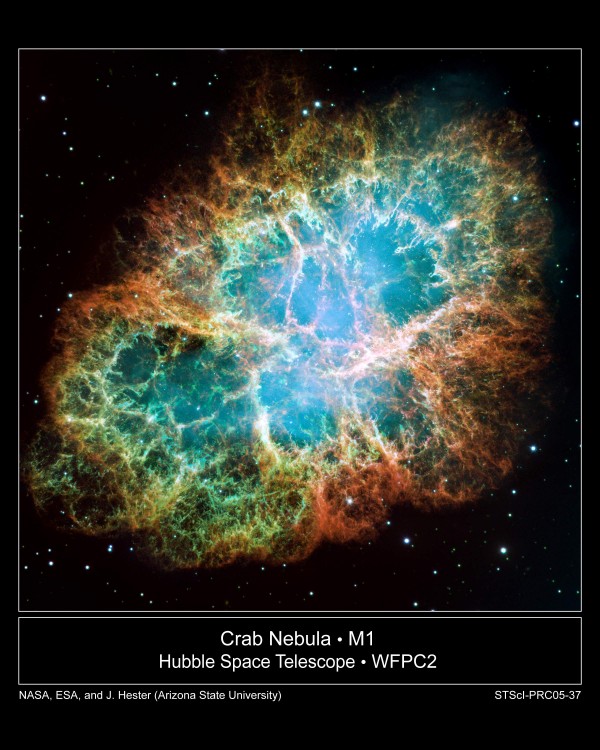
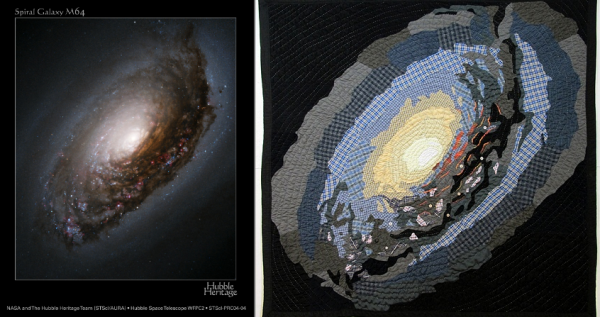
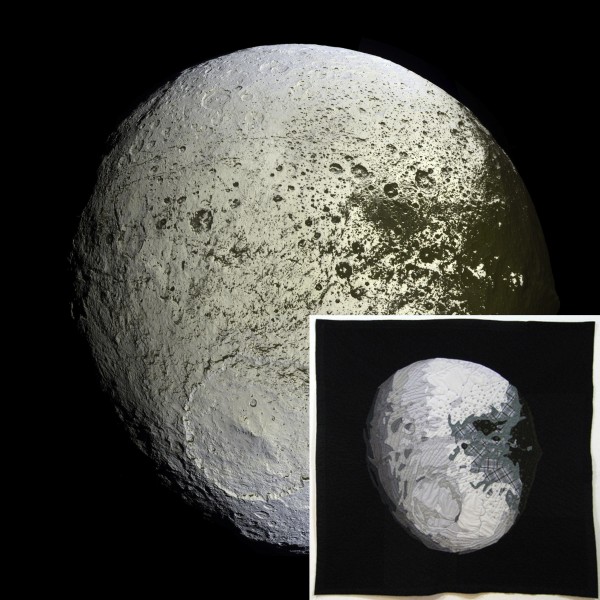
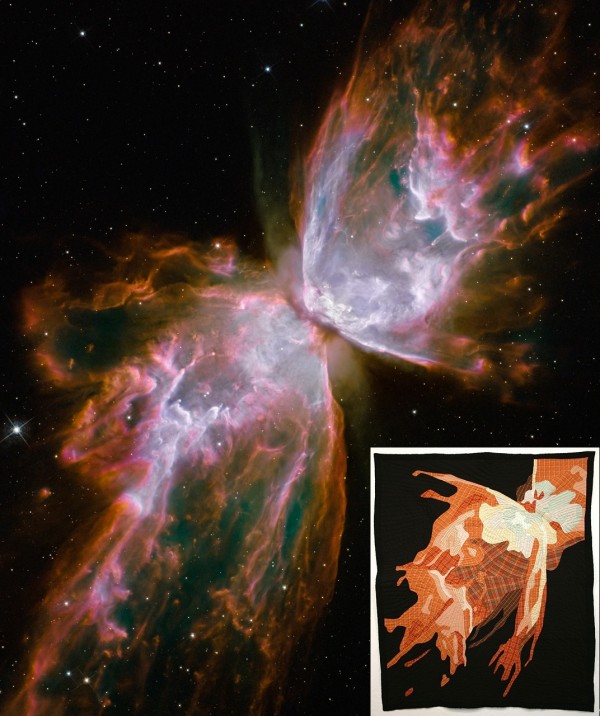
Kudos, Ethan. As always.
Have a merry Christmas and thank you for your quite a unique blog.
Yours faithfully,
N. :)))
Very nice idea. Wish I had me one of these.. although the prices are a bit steep.... 700$ for a blanket.. ouch!
If anyone is wondering how it's done and how to make it yourself (if you know how to sow of course :D )
You take a photo of the desired image and import it in a vector program such as Adobe Illustrator or Corel Draw. You trace the image, selecting very low detail for sampling, giving the vector image very few steps for generating output. You will get a similar result as the right image samples. Then you scale them to desired size of the final blanket. You print each of the curves in image as separate objects and use that as template for cutting the fabrics. If you want to reproduce the colors, use fabrics of similar color. if you want to go a bit abstract.. experiment with different patterns. The use sawing machine and make a blanket :) Of course this same proces can be used for paper collages or anything :)
Hehe.. finally some use of being a graph. designer on a astrophysics blog ;)